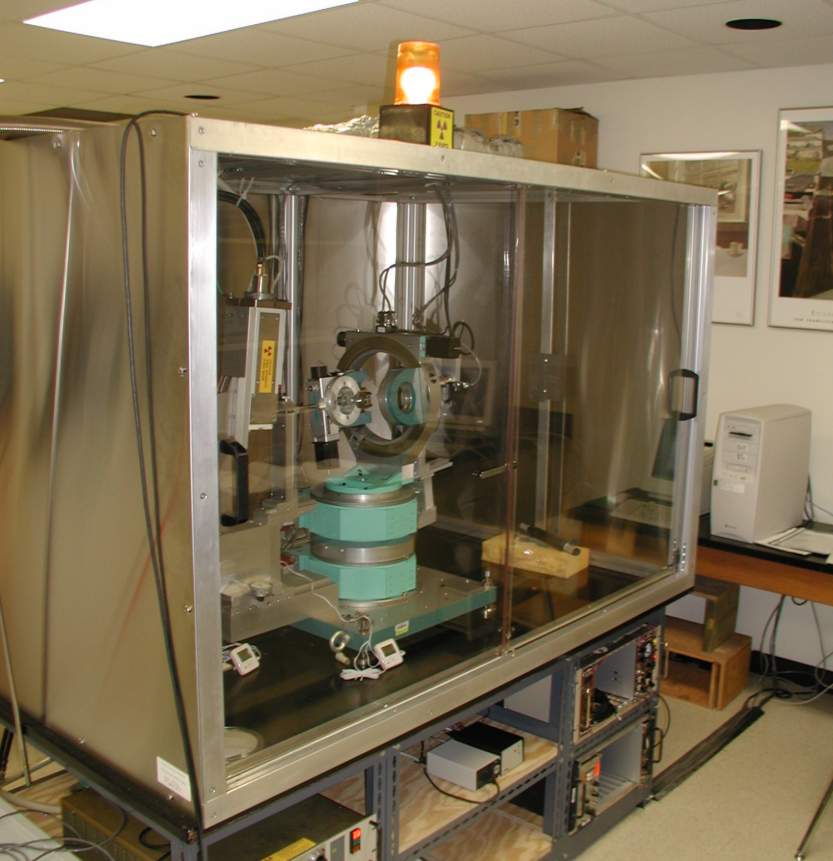

Huber Diffractometer

Pictures from the installation and commissioning are here.
The Huber diffractometer is optimised for measuring unit-cell parameters of crystals. These are determined by measuring the angles at which the X-ray beams are diffracted by the sample. The relationship between the diffracted angles, q, the wavelength l of the radiation and the d-spacings of planes within the crystal is given by Braggs Law:
l = 2d sin(q)
The d-spacings of planes are derived from the unit-cell parameters of the crystal. See the lattice parameters page for more details.
Therefore, in order to measure the unit-cell parameters to high precision we need to measure the Bragg angle q to high precision. Therefore our Huber diffractometer is large to give us narrow, well-collimated X-ray beams and to maximise the angular precision of our measurements. It is an Eulerian cradle design that allows us to measure the diffracted beams at eight equivalent settings on the diffractometer and thereby eliminate the errors introduced by small mis-centering of the crystal.
The diffractometer is controlled by the SINGLE software, originally written by Larry Finger of the Geophysical Laboratory. It includes a number of features such as 8-position centering, full profile fitting and vector-least-squares refinement of unit cell parameters, all of which are designed to maximise the precision of measured unit-cell parameters. Details of the methods that we use are described in volume 41 of the Reviews in Mineralogy and Geochemistry available from the Mineralogical Society of America. The SINGLE software can be downloaded from our software page.
Please contact Ross Angel (Tel: 231-7974) for further details.
The Huber diffractometer is optimised for measuring unit-cell parameters of crystals. These are determined by measuring the angles at which the X-ray beams are diffracted by the sample. The relationship between the diffracted angles, q, the wavelength l of the radiation and the d-spacings of planes within the crystal is given by Braggs Law:
The d-spacings of planes are derived from the unit-cell parameters of the crystal. See the lattice parameters page for more details.
Therefore, in order to measure the unit-cell parameters to high precision we need to measure the Bragg angle q to high precision. Therefore our Huber diffractometer is large to give us narrow, well-collimated X-ray beams and to maximise the angular precision of our measurements. It is an Eulerian cradle design that allows us to measure the diffracted beams at eight equivalent settings on the diffractometer and thereby eliminate the errors introduced by small mis-centering of the crystal.
The diffractometer is controlled by the SINGLE software, originally written by Larry Finger of the Geophysical Laboratory. It includes a number of features such as 8-position centering, full profile fitting and vector-least-squares refinement of unit cell parameters, all of which are designed to maximise the precision of measured unit-cell parameters. Details of the methods that we use are described in volume 41 of the Reviews in Mineralogy and Geochemistry available from the Mineralogical Society of America. The SINGLE software can be downloaded from our software page.
Please contact Ross Angel (Tel: 231-7974) for further details.